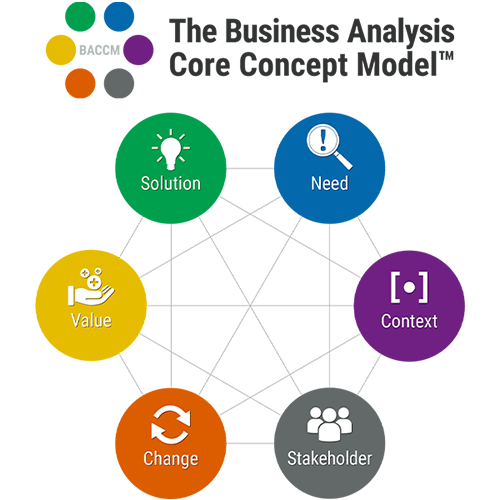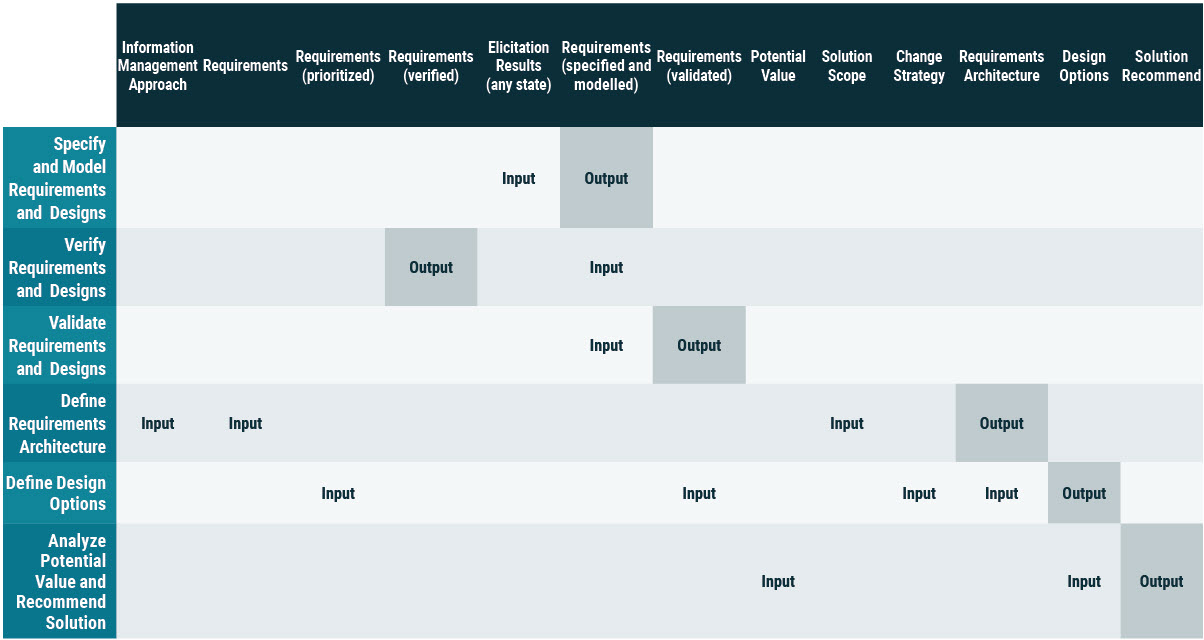
4. Tasks and Knowledge Areas
E) Requirements Analysis and Design Definition
The Business Analysis Standard
This knowledge area describes the tasks that business analysis professionals perform to structure and organize requirements discovered during elicitation activities, specify and model requirements and designs, validate and verify information, identify solution options that meet business needs, and estimate the potential value that could be realized for each solution option.
BACCM™ for Requirements Analysis and Design Definition

Competencies |
Business Analysis Tasks |
|
Analytical Thinking and Problem Solving, Business Knowledge, and Communication Skills are competencies needed for Analysis and Design tasks. See: BABOK Guide v3, 9.1 Analytical Thinking and Problem Solving and BABOK Guide v3, 9.3 Business Knowledge, and BABOK Guide v3, 9.4 Communication Skills |
 |
Input and Output Relationships

Explore Task Cards:







